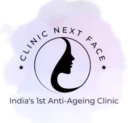Hypertrichosis: Types, Prevention And Treatment Options
Table of Contents
ToggleThe first case of hypertrichosis happened in the 17th century in the Canary Islands.
Highlights
- Hypertrichosis is a skin disorder that causes extra hair growth in a localized or generalized form.
- The first case of hypertrichosis happened in the 17th century in the Canary Islands.
- Laser hair removal can cure hypertrichosis.
What Is Hypertrichosis?
Hypertrichosis, also called “Werewolf Syndrome”, is a dermatological condition that causes excessive hair growth anywhere on the human body. It is an extremely rare condition that affects both men and women. The abnormal hair growth may be in small patches and cover your face and body. This dermatological disorder can occur at your birth or develop over time.
A dermatologist may distinguish Hypertrichosis into the categories below:
- Congenital (from birth) or acquired
- Localised or Generalised and
- Depending on the type of hair, i.e. lanugo, vellus or terminal hair
One of the most common symptoms is the excessive amount of hair on your skin. The hair can be lanugo (soft and unpigmented hair, which is usually visible in the first few days after birth or terminal hair (the thick hair, which appears on legs,) or vellus (fine and thin hair). The extra hair growth can occur across your body or in tiny or isolated patches. It is a rare skin condition that affects both men and women and can manifest at birth or intensify at a later stage in your life.
Types & Classification
Dermatologists categorize hypertrichosis into congenital and acquired. Here are the key differences between these two types of hypertrichosis:
Congenital Hypertrichosis
Congenital hypertrichosis occurs from birth that forms a part of numerous syndromes or hereditary diseases and shows other features, such as facial dysmorphism and enlarged gums. It may be the only feature in several individuals without other related health issues but a family history of extra hairiness.
Congenital hypertrichosis can occur in a generalized or localized form.
- Generalized Hypertrichosis
Generalized hypertrichosis is a rare disorder with several possible inherent causes. Congenital generalized hypertrichosis can create a part of several syndromes. Cornelia de Lange syndrome, Cantu syndrome,e, and Ambras syndrome are a few syndromes related not only to extra hair growth but also other features.
Congenital hypertrichosis lanuginosa and terminals are disorders that show excessive hair growth. Intrauterine exposure to medicines, such as alcohol and hydantoin, can also cause these disorders.
In congenital hypertrichosis lanuginosa, the fine lanugo hairs appear in a fetus usually but don’t fade away after birth. The hairs keep growing excessively in different body parts during a person’s life.
When it comes to congenital hypertrichosis terminalis, the baby isn’t born with lanugo or vellus hair and may have terminal hair at birth, which keeps growing throughout life. Affected people tend to have thick and fully pigmented hair, which covers the body, including the case.
Acquired Hypertrichosis
Acquired hypertrichosis can be a generalized or localized condition where an individual has the condition that doesn’t have extra hair growth at birth but develops later in life. It can occur as an outcome of chronic medical conditions, such as cancer, anorexia nervosa, and thyroid.
This dermatological skin disorder may also occur because of consistent irritation of the skin (rubbing) after the application of a plaster cast for fracture or topical medicines like minoxidil or steroids or minoxidil. It may also develop as a part of diseases like Dermatomyositis (over the knees).
Is There A Difference Between Hirsutism And Hypertrichosis?
Yes, Hirsutism and Hypertrichosis are different from each other. Hirsutism is the unnecessary growth of dark or thick hair in women in body parts that are more similar to male hair growth patterns (beard, mustache, shoulders, central chest, inner thigh, back, and lower abdomen). The amount of hair growth, which is considered extra, may vary depending on cultural and ethnic background.
Hypertrichosis is a different dermatological condition that may be generalized or localized. It is an increase in the amount of hair growth in any body part. The amount of body hair varies in men. Some are quite hairy, but rarely present for medical evaluation.
Hirsutism can be due to an increase in circulating androgen levels and end-organs reaction to androgens. It usually results from abnormally high androgen levels caused due to increased production of androgens or peripheral conversion of testosterone to DHT by 5-alpha-reductase. Hypertrichosis involves non-androgenic hair growth.
Diagnosis:
Hypertrichosis is a rare dermatological disorder that affects both men and women. If the hair growth patterns are abnormal and start in childhood, it gets easy to diagnose congenital hypertrichosis, mainly if there is a family history of the same symptoms. Doctors can use a microscope to check samples of a person’s hair to learn if the extra and abnormal hair growth is consistent with the dermatological disorder.
Acquired hypertrichosis occurs later in life, and it may need more work to identify the cause and the right course of treatment. Blood tests help to determine abnormal testosterone levels or other hormonal imbalances. Once a doctor suspects an inherent health condition, such as thyroid and cancer, imaging tests like ultrasounds aren’t required.
At Clinic Next Face, our dermatologist diagnoses hypertrichosis with a thorough physical examination of the excess hair growth. They also consider other factors such as age, sex, ethnicity, and androgen sensitivity. Our dermatology may record information related to your medical and family records during the medical consultation. They also consider your lifestyle habits and recent medicine consumption to get to a conclusion.
During a clinical consultation, a dermatologist may record information related to your medical and family history, lifestyle habits and recent medicinal intake for an accurate conclusion.
Are You At Risk?
You are at risk of having hypertrichosis if you:
- Have excessive hair growth that affects your full body
- Take medicines that trigger hypertrichosis.
- Use steroids, oral or topical, without guidance
- Tend to rub your skin
- Suffer from health issues like Porphyria Cutanea Tarda
Prevention & Management:
Prevent acquired hypertrichosis by following the below tips:
Avoid taking medication that triggers the condition.
Use prescription drugs strictly under the provision.
You can’t prevent congenital hypertrichosis. But, you can manage it temporarily with trimming, shaving, plucking, electrolysis, waxing, threading and applying depilatory creams.
Self-Care
If you do self-care with the conventional hair removal techniques above, you get only short-term relief. Such remedies won’t stop hair from growing back in a condition like hypertrichosis. At Clinic Next Face, opt for a permanent solution by seeking the required medical assistance.
Treatment Options Available At CNF Clinic:
We offer laser hair removal services to manage hypertrichosis. Our skilled dermatologists use state-of-the-art laser technologies to deliver the desired results.
Here are the technologies we use for laser hair removal:
- Diode
- Alexandrite
- Super Hair Reduction (AFT)
- Prognosis
Our experts identify the type of hypertrichosis before trying to manage or treat it.
Clinic Next Face aims to redefine skincare quality and deliver advanced dermatology solutions.
Prognosis
It is essential to identify the type of hypertrichosis before attempting to manage it or treat it.
Delivering World-class dermatology solutions is our mission! Redefining the quality of care is a passion!
Talk To Our Experts Today!
No Obligations! Just jump on a quick call with our expert and know what kind of treatment will suit you the best.
Either way you will get some actionable tips to reach your skin goals faster.


![3 beauty blunders killing your outcomes from a cosmetic procedure.
[Cosmetics, Aesthetics, Bangalore, Skin, Lips, Under-Eyes]](https://clinicnextface.com/wp-content/plugins/instagram-feed/img/placeholder.png)




